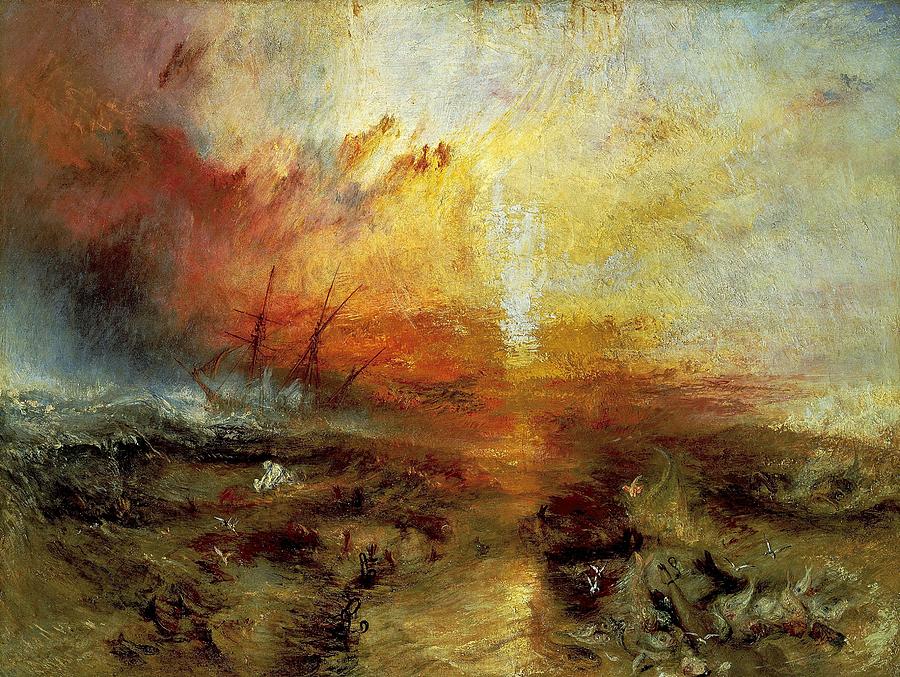
The Slave Ship Painting by Philip Ralley Fine Art America
The Slave Ship (1840). J M W Turner (23 April 1775 - 19 December 1852). 90.8 cm X. 122.6 cm (35.7 in X 48.3 in). Oil on canvas. Museum of Fine Arts, Boston. At first sight Slave Ship seems to depict a beautiful sunset over a tumultuous sea. A Turner tactic to lull you in. A stark counterpoint to the horrors and barbarity that are the real.

JMW Turner, Slave Ship, detail with chains a photo on Flickriver
Turner has depicted a ship, visible in the background, sailing through a tumultuous sea of churning water and leaving scattered human forms floating in its wake. Turner was inspired to paint this picture after reading about the Zong massacre, in which a captain of a slave ship ordered 133 slaves to be thrown overboard in 1781 so that insurance.
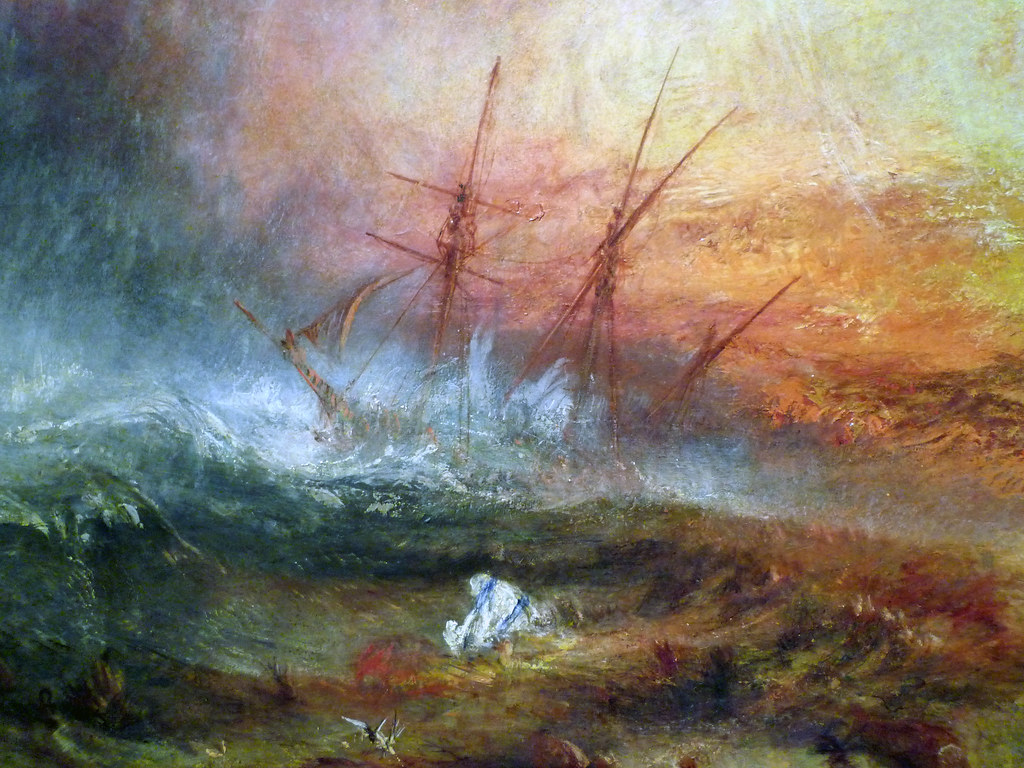
JMW Turner, Slave Ship, detail of ship Joseph Mallord Will… Flickr
A radical artist confronts changing times. One of Britain's greatest artists, J. M. W. Turner (1775-1851) lived and worked at the peak of the industrial revolution, when steam replaced sail, machine power replaced manpower, and wars, political unrest, and social reforms transformed society. "Turner's Modern World" explores how this.

Truth, Beauty, Freedom, and Books I Interview JMW Turner
Lori Landay and Beth Harris provide a description, historical perspective, and analysis of William Turner's Slave Ship. The link to this video is provided at the bottom of this page. Joseph Mallord William Turner, Slave Ship (Slavers Throwing Overboard the Dead and Dying, Typhoon Coming On) , 1840 (Museum of Fine Arts, Boston).

Turner, Slave Ship YouTube
ABSTRACT. This article explores the risks and dangers of redemptive readings of JMW Turner's (in)famous 1840 painting, Slave Ship (Slavers Throwing Overboard the Dead and Dying - Typhon Coming on) that assume that we cannot be complicit in anything other than abolition and deliberately forget and disavow the underlying structures and continuing dispossessions of slave racial capitalism.

JMW Turner, Slave Ship, detail with fish Joseph Mallord Wi… Flickr
A-level: J. M. W. Turner, Slave Ship. by Lori Landay and Dr. Beth Harris. Joseph Mallord William Turner, Slave Ship (Slavers Throwing Overboard the Dead and Dying, Typhoon Coming On), 1840 (Museum of Fine Arts, Boston)

The Slave Ship, 1840, J.M.W. Turner de Jivko Darakchiev (2018) Unifrance
Turner, Slave Ship. Lori Landay and Beth Harris provide a description, historical perspective, and analysis of William Turner's Slave Ship. Joseph Mallord William Turner, Slave Ship (Slavers Throwing Overboard the Dead and Dying, Typhoon Coming On), 1840 (Museum of Fine Arts, Boston). Previous: Constable, The Haywain.

JMW Turner, Slave Ship, detail with shark Joseph Mallord W… Flickr
One of J. M. W. Turner's most celebrated paintings, Slave Ship (Slavers Throwing Overboard the Dead and Dying, Typhoon Coming On) (1840) is a striking example of the artist's fascination with violence—both human and elemental. In this six-minute video, Sylvia Quarles Simmons, honorary MFA trustee and Gallery Instructor Associate; Nancy Scott, professor of Art History, Brandeis University.
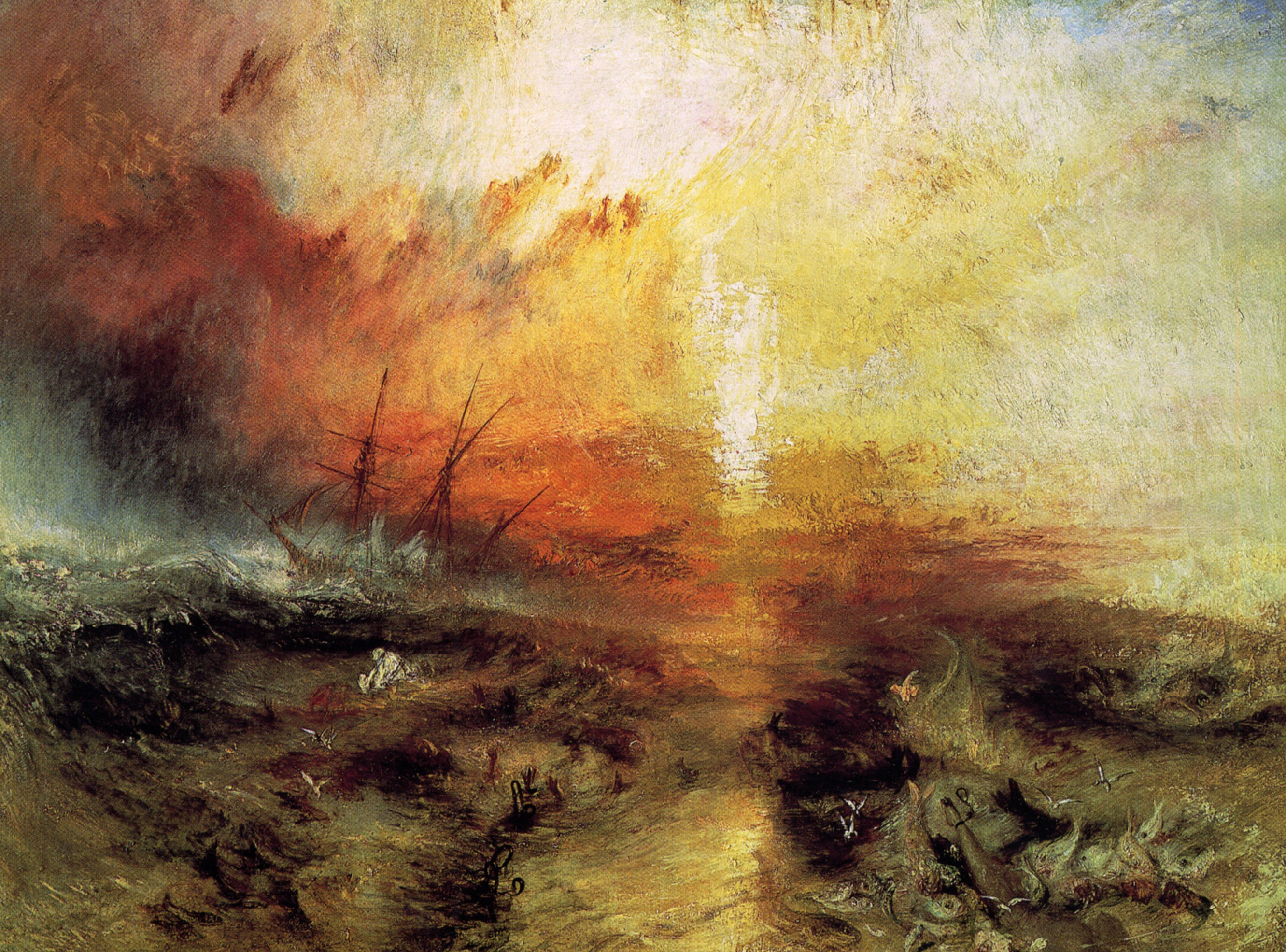
The Slave Ship William Turner encyclopedia of visual arts
The Slave Ship by J.M.W. Turner is a medium-sized oil n canvas painting that has dimensions of 91 × 123 centimeters (36 × 48 inches). 8. Where is Turner's masterpiece on display today? The painter was owned by English art critic John Ruskin (1819-1900) in the 1840s, shortly after it was exhibited at the Royal Academy.

art you should know / j.m.w. turner's slave ship — Reality and Retrospect
One of Turner's most celebrated works, "Slave Ship" is a striking example of the artist's fascination with violence, both human and elemental. He based the painting on an 18th-century poem that described a slave ship caught in a typhoon and on the true story of the Zong, a British ship whose captain, in 1781, had thrown overboard sick and dying.
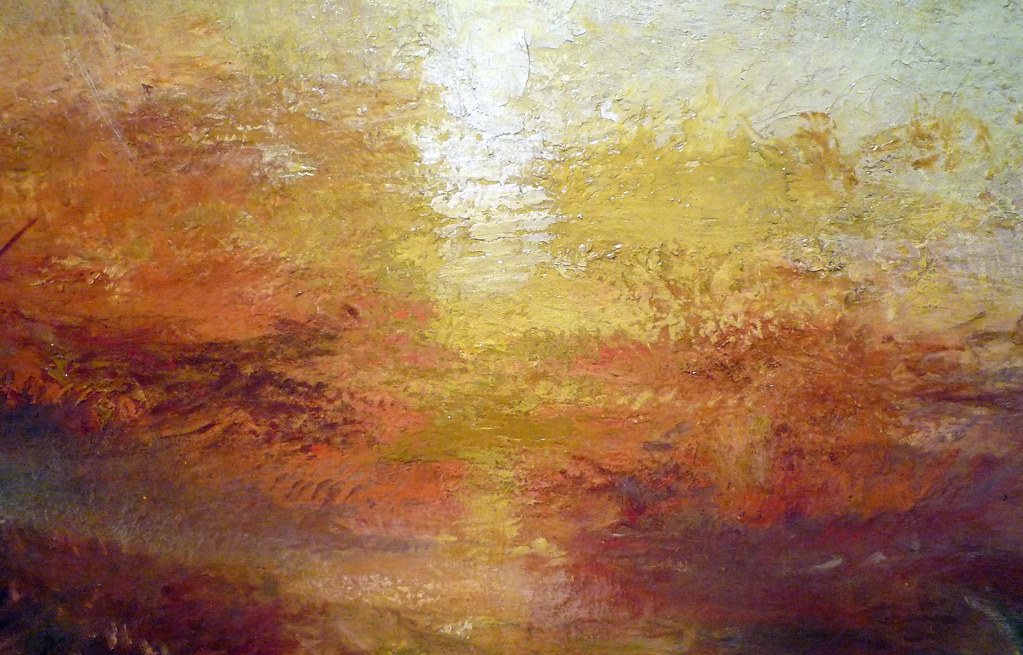
JMW Turner, Slave Ship, detail with sun Joseph Mallord Wil… Flickr
The Slave Ship is an 1840 oil painting by J.M.W. Turner in the Romantic Maritime style, which Turner was well known for. On the surface, it looks like an innocent painting of a stormy sea with a ship middle left struggling to find its passage through. Look closer. You will see bodies.
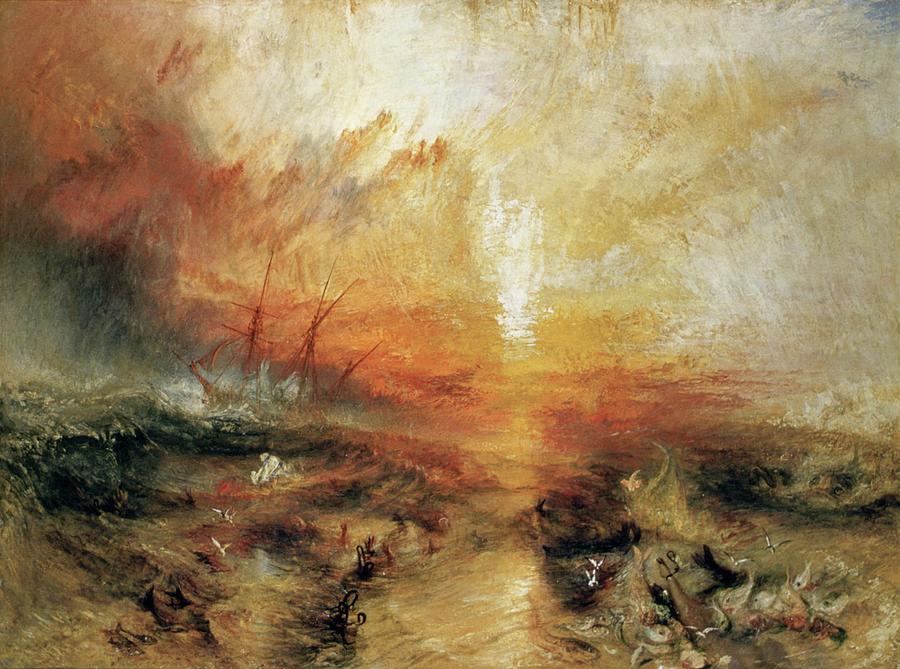
Slave Ship Painting by Joseph Mallord William Turner Pixels
Turner, Slave Ship. Joseph Mallord William Turner, Slave Ship (Slavers Throwing Overboard the Dead and Dying, Typhoon Coming On), 1840 (Museum of Fine Arts, Boston)

Slave Ship (Slavers Throwing Overboard the Dead and Dying, Typhoon
Published on June 19, 2020 / Updated on October 14, 2023. Email: [email protected] / Phone: +44 7429 011000. This painting was initially known as Slavers Throwing overboard the Dead and Dying - Typhoon coming on. It was completed by William Turner in 1840 and is currently in the Museum of Fine Arts, Boston.

😊 Jmw turner slave ship. The Slave Ship J.M.W Turner Essay. 20190304
The Slave Ship, originally titled Slavers Throwing overboard the Dead and Dying—Typhon coming on, is a painting by the British artist J. M. W. Turner, first exhibited at The Royal Academy of Arts in 1840.. Measuring 35 + 3 ⁄ 4 in × 48 + 1 ⁄ 4 in (91 cm × 123 cm) in oil on canvas, it is now on display at the Museum of Fine Arts, Boston.In this classic example of a Romantic maritime.

Slave Ship (Slavers Throwing Overboard the Dead and Dying, Typhoon
AboutTranscript. Turner's "Slave Ship" painting reveals a beautiful sunset with a dark secret. Chained slaves are thrown overboard during a typhoon. The artwork shows nature's power and indifference to human actions. The painting's history includes ownership by abolitionists and reflects the ongoing struggle against slavery.
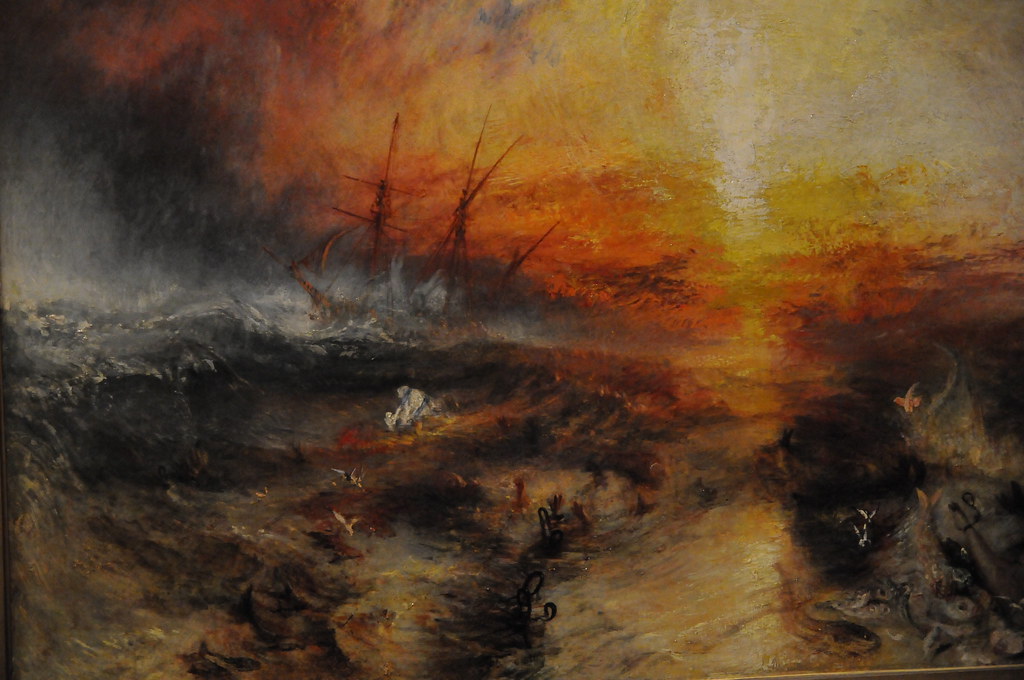
Slave Ship Joseph Mallord William Turner 1840 Oil on can… Flickr
Note: One of Turner's most celebrated works, Slave Ship is a striking example of the artist's fascination with violence, both human and elemental.The painting was based on a poem that described a slave ship caught in a typhoon, and on the true story of the slave ship Zong whose captain, in 1781, had thrown overboard sick and dying slaves so that he could collect insurance money available.